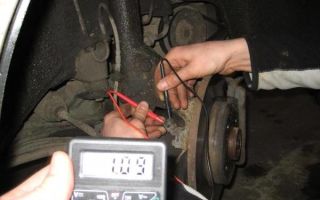What is the difference between a CVT and an automatic transmission, which gearbox works better and more reliably, which one should you prefer?
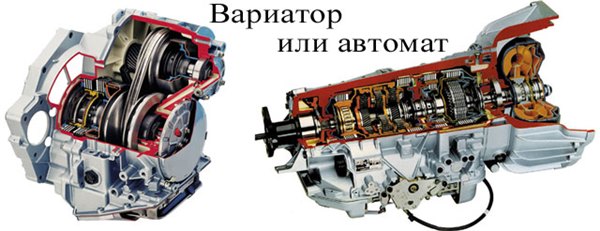
When purchasing a car, the consumer is often faced with the need to choose between a manual and automatic gearbox.
And when making a choice between these options does not present much difficulty (because the consumer, as a rule, is aware of all their advantages and disadvantages), then when the question arises of choosing between an automatic transmission and a variator, then much more difficulties arise.
Often, many car enthusiasts do not even know what the differences are between these checkpoints. However, we will try to fill this knowledge gap and find out for which cars an automatic is considered preferable, and for which a CVT is considered preferable.
The main differences between a CVT and an automatic transmission
Firstly, there are differences in design. Many people know that an automatic transmission consists of two main mechanisms.
The first is the torque converter, which actually acts as a clutch. The second is a gearbox together with a gear block (it is used to change the gears themselves).
A variator contains a block with driven and driving pulleys, which are connected by a metal belt.
The variator mechanism operates without any switching, using the movements of the indicated pulleys, which help the car pick up speed (while the engine speed does not change at all). The power unit, which is connected to the variator, has a long service life because it does not operate at high speeds.
As a result, the differences between an “automatic” and a variator (in technical terms) also affect the specifics of engine operation. How, for example, can you find out whether a CVT or an automatic transmission is installed on a car using only driving sensations?
When the automatic transmission reaches a certain number of revolutions, it switches to a lower (or higher) gear. With such a transition, sometimes (modern automatic transmissions have almost gotten rid of this drawback and it occurs infrequently) a weak push is felt, just like when switching a manual transmission.
In this case, the automatic transmission changes gear only when it reaches a certain number of revolutions, which is set by the manufacturer and may differ for each specific automatic-engine pair. This is usually in the range of 2000-4000 rpm. On cars with a sports mode, gear shifting can occur at speeds close to the red zone of the tachometer scale of 5500-6000 rpm.
But the principle of operation of the variator is distinguished by the fact that it does not make any switches at all. A car equipped with a variator drives smoothly, gradually picking up speed and slightly changing engine speed.
Therefore, it is much more convenient to travel in a car with a CVT both on city streets and on highways. In fact, the variator has an infinite number of gears.
And, perhaps, this is its most important distinguishing feature in comparison with an automatic transmission.
The main advantages of a CVT compared to an automatic transmission
Firstly, the automatic transmission loses in the sense that it needs a much larger volume of oil and requires more frequent oil changes.
In addition, the life of an automatic transmission is much shorter compared to a CVT, which adds some costs.
Also, an automatic transmission has significantly higher fuel consumption (due to the fact that the engine with an automatic transmission reaches a higher number of revolutions than with a CVT).
This is a pretty significant minus. Especially considering today's gasoline prices. All of the above are the differences between a CVT and an automatic. Therefore, when you are thinking about choosing a gearbox, then we recommend taking a closer look at the CVT.
Disadvantages of a CVT compared to an automatic
But still, a CVT is not well suited for all cars. This gearbox option is ideal for cars with engines up to 250 hp. These cars are usually created for city driving and light off-road use. Nissan especially likes to install them on its cars; Audi does not disdain CVTs either.
When engine power is considered a priority, and when you need to overcome serious obstacles, then you should choose an automatic transmission, which is generally done by all car manufacturers.
As for reliability, both modern gearbox options are very reliable when used correctly.
Therefore, now, knowing the difference between a variator and an automatic, there is no need to be embarrassed by the variator and snort contemptuously at it. It has a lot of great benefits. If you value a smooth ride, silence and comfort, then try driving a car with a CVT, for example, a Nissan Murano. Most likely you will really like it :).
Source: https://autodromo.ru/articles/chem-otlichaetsya-variator-ot-avtomata-kakaya-korobka-luchshe-i-nadezhnee-rabotaet-chto
What is the difference between a CVT and an automatic and which is better?
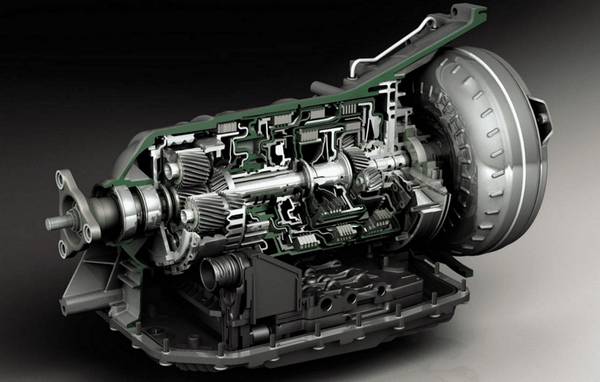
Greetings to you all, my dear subscribers and regular readers of the blog! Just a couple of decades ago, a car with an automatic transmission was a curiosity on our roads.
Today, many motorists choose it for its convenience and comfort while driving. However, it has its own varieties, which differ in design and principle of operation.
At the request of our readers, today I want to pay attention to the question of how a variator differs from an automatic transmission.
The essence of how an automatic transmission works
If everything is more or less clear with a hydromechanical automatic transmission, then few of our fellow citizens will be able to describe why a variator is good and what the key difference is.
And it was invented no more or less 30 years ago, and was first tested on the Japanese brand Subaru in 1987.
So, the automatic transmission we are already familiar with is based in its operation on the action of the so-called “torque converters”. They provide communication between the engine and the vehicle axles.
To change the gear ratio, the machine is equipped with a planetary gear. The main advantages of such a transmission are ease of control and reliability, as well as a long service life.
However, there are also certain disadvantages. First of all, it is worth noting the increased fuel consumption, some slowdown when speed increases and jerks associated with switching.
A car with an automatic transmission cannot be towed in a regular tow if it breaks down.
The torque converter performs the clutch functions, and therefore we managed to get rid of this traditional unit. When the clutches are compressed or decompressed, specific clutches that correspond to the gears are engaged.
Disadvantages of CVT design
Despite the fact that the continuously variable variator is devoid of many of the shortcomings of previous transmissions, problems begin as the main components become obsolete and inevitably wear out. Among the main problems of this design it is worth noting:
- the presence of technological tolerances, the correction of which requires special equipment;
- the need for adjustments;
- high cost of repairs and shortage of individual parts.
Owners of cars with a CVT are often faced with the reluctance of official dealers to accept CVTs for repair. They are told that it is necessary to replace the entire gearbox assembly, since there are not enough spare parts, and the craftsmen lack qualifications in performing repair work.
If externally and internally these devices do not differ significantly, then the main differences are observed during operation. Let's devote a few words to the most common breakdowns and their causes. Automatic transmission malfunctions are usually caused by untimely maintenance. It is necessary to change the oil regularly, and many car enthusiasts neglect this rule, which leads to expensive repairs.
First, the oil filter becomes clogged, which leads to clogging of the pump. Because of this, it cannot provide normal pressure in the system.
The clutches spin, but the gears themselves do not engage normally, the car jerks more often, unplanned jerks appear, etc.
In the future, the automatic transmission wears out even more - the friction linings of the torque converter and planetary gears fail, and the repair of this unit is considered one of the most expensive, regardless of the make of the car.
The importance of timely maintenance
At the same time, the resource of the automatic transmission is enormous, subject to regular maintenance. A high-quality automatic machine can easily last several hundred thousand kilometers. Therefore, changing the oil every 50,000 kilometers along with the filter will be the key to long-term and successful operation of the automobile transmission.
The difference between the two types of transmissions (automatic and CVT) is not only the cost of maintenance. The popularity of the latter is ensured by better overclocking dynamics. Let's not forget that the variator is devoid of such traditional disadvantages as jolts when changing gears.
Automatic transmissions require a larger volume of gear oil (there are thematic videos on this topic on the Internet). In its case, it may require from 8 to 10 liters of lubricant, while for a variator 5–8 liters is enough. The lower efficiency of an automatic transmission causes increased fuel consumption.
That is why those who have to drive frequently and for long periods of time every day pay attention to the CVT as a more economical type of transmission.
But automatic transmission is considered a more reliable option, so with proper care it is a more preferable option, and difficulties with repairs are quite solvable, which cannot be said about a CVT-type box.
Today we tried to shed light on the topic of which is better: a CVT or a traditional hydromechanical automatic.
Each of these components has certain pros and cons, so when purchasing a car, a car enthusiast must make his own decision based on reviews from other drivers.
So far, sales of automatic transmissions are twice as high as sales of CVTs, however, there is no doubt that these statistics will gradually change not in favor of traditional automatic transmissions. With this we will say goodbye, but we will definitely hear from you in the coming days. Good luck to all!
Sincerely, blog author Andrey Kulpanov
Source: http://avto-kul.ru/poleznoe-ob-avtomobile/chem-otlichaetsya-variator-ot-avtomata.html
Which is better: automatic or CVT? Let's figure it out together!
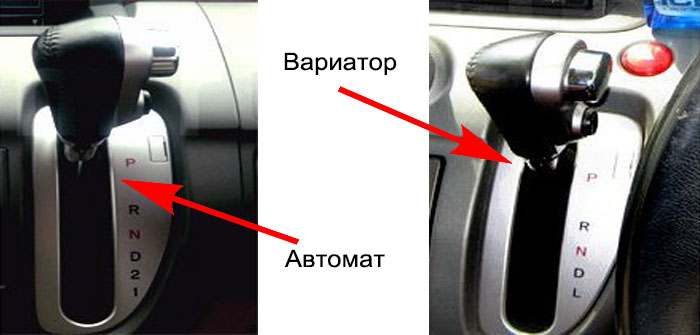
The good old manual transmission is gradually disappearing from the market. Modern car enthusiasts prefer comfort and a certain feeling of “freedom” behind the wheel, which became available to everyone with the advent of automatic transmissions.
But technological progress tirelessly rushes forward, bringing new automobile units to the market. We are talking about CVTs - a transmission that is the result of a symbiosis of mechanics and automatic transmission. Many modern car models are equipped with this type of box.
Like everything new, CVTs undergo experimental testing in practice, are refined, updated and improved.
So, until all automakers have equipped their cars with self-driving capabilities, drivers are faced with a dilemma: which gearbox to choose.
And the more cars are equipped with CVTs, the more questions arise: what is the operating principle of the CVT based on? Is this box secure? What is the difference between a CVT and an automatic if the car also has 2 pedals? Finally, which is better: automatic or CVT? These and some other questions will be answered in this article.
What is the difference between an automatic and a CVT?
Buying a car is an act that cannot be called spontaneous. One way or another, car enthusiasts prepare in advance for this event, find information about design features, power, operation, “sores,” etc.
If you miss this moment, you can quickly become disappointed in any car. To avoid negative emotions, you need to buy a car that meets your own requirements.
For example, it is worth clearly understanding what the fundamental difference is between an automatic transmission and a CVT, since some equate these units.
How does automatic transmission work?
The operation of the “automatic machine” is based on the principle of interaction between two main components: the torque converter and the gearbox. The torque converter builds up pressure, causing gears to shift smoothly and automatically. In fact, it was this unit that replaced the mechanical clutch.
The second automatic transmission unit - the gearbox - is responsible for the mechanical part of the transmission and consists of several stages, designated by pairs of gears that are in constant mesh.
How does a variator work?
The peculiarity of CVT gearboxes is continuously variable gear shifting. A pair of cone pulleys are responsible for a continuous increase in speed, one of which is driving, the second is driven. The pulleys interact with each other through a metal trapezoidal belt or chain.
What happens inside the variator during operation?
Cone-shaped pulleys are not monolithic parts. Each pulley is a series of sliding elements.
The lowest gear (initial or first) occurs at the moment when the drive pulley is in its maximum extended state and the chain runs along a small diameter.
Accordingly, when the drive pulley is extended to a minimum distance, the chain running diameter increases to a maximum, which is typical for fifth, sixth and higher gears.
This is the whole point of how a variator works: the movement of the pulleys changes the gear ratios, which leads to a decrease or increase in the speed of the car.
Automatic transmission VS CVT. Advantages and disadvantages
To put an end to the question “which is better: automatic or CVT?”, it is necessary to evaluate all the advantages and identify all the disadvantages of these types of transmission:
Advantages of automatic transmission
- An automatic transmission gives an undeniable feeling of comfort behind the wheel, especially when driving a car in city conditions, due to the absence of the need to constantly pull the gear shift lever. Owners of cars with an automatic transmission receive more confidence, ease of control and freedom behind the wheel. In addition, the car’s engine does not experience overload, and therefore is not subject to premature wear, due to the fact that gears are switched automatically and not forcefully.
Disadvantages of automatic transmission
- The automatic transmission has a relatively low efficiency due to the design features of the torque converter. As a result, cars with automatic transmission cannot be called economical in terms of fuel consumption.
- Weak acceleration dynamics, “dullness” and “dips” when accelerating are another significant drawback of the automatic transmission in comparison with the CVT.
Advantages of a CVT gearbox
- The CVT provides smoother acceleration and movement of the car.
- Low noise level of the box during acceleration.
- The throttle response and dynamics of the variator are much higher than automatic transmissions and manual transmissions, since no time is wasted on shifting gears.
- A car with a CVT will not stall at the wrong moment.
- The variator holds the car while stopping on an incline, preventing it from rolling down.
- The operation of the variator is controlled by a computer. The box is electronically adjusted to the operating mode of the internal combustion engine, the so-called “adaptation”, which allows you to operate the car in optimal mode, save fuel and avoid unnecessary loads leading to wear of the units.
Disadvantages of a CVT
- CVTs appeared relatively recently and are constantly being improved. Therefore, statistics on them have not yet been developed, and therefore, maintenance, and especially repair of these boxes, are very expensive procedures.
- CVT gearboxes require regular maintenance using specific oils, which differ fundamentally depending on the manufacturer and design features.
Conclusions. Which is better: automatic or CVT?
Having information about the features and operating principles of various types of transmissions, knowing their advantages and disadvantages, every car owner will find his own answer to the question “which is better: an automatic or a CVT?” When purchasing a car, car enthusiasts should rely on individual needs and inner driving instincts.
Perhaps for some, the proven reliability of an automatic transmission is a step higher than an innovative CVT. Someone, on the contrary, will choose advanced technologies, wanting to test their strength.
Everything in this world is improving, something new is always replacing the old.
In any case, the decision about which transmission – automatic or CVT – your next car will have is up to you!
Source: https://proautoprom.ru/chto-luchshe-avtomat-ili-variator/
CVT, robot or regular automatic – what to choose? – magazine Behind the Wheel
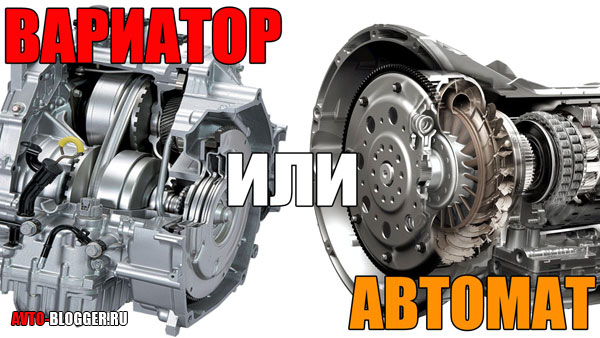
We recently expressed general thoughts about the pros and cons of the “handle” and the machine gun. However, they immediately promised to continue the topic: after all, automatic machines are not limited to hydromechanics alone. We understand robots, CVTs and other DSGs.
It is obvious that today there is nothing simpler, more reliable and cheaper than mechanics. Therefore, any step away from the usual “handle” will entail a certain set of problems - from technical to financial and even organizational: to take the same towing of a faulty car. As compensation for the absence of a third pedal, we get comfort and... But we’ll tell you about “and”.
Single clutch robot
Examples of use: Smart fortwo, Lada Vesta, Lada Xray.
Editorial Vesta with an auto-mechanical transmission (AMT).
Editorial Vesta with an auto-mechanical transmission (AMT).
The primitive “under-automatic” has supporters: many claim that driving with such a gearbox is convenient and comfortable. At the same time, the reliability of a simple unit is considered higher than that of hydromechanics and, even more so, a variator. Such a robot is based on conventional mechanics, but its clutch life is higher - according to factory data, by about 40 percent.
| The VAZ AMT is based on a conventional manual gearbox VAZ-2180 with a cable shift mechanism. The VAZ AMT is based on a conventional manual gearbox VAZ-2180 with a cable shift mechanism. | The AMT selector of the editorial Lada Vesta moves freely, regardless of whether the ignition is turned on and whether the brake pedal is pressed. You have to carefully monitor the display on the instrument panel. The AMT selector of the editorial Lada Vesta moves freely, regardless of whether the ignition is turned on and the brake pedal is pressed. You have to carefully monitor the display on the instrument panel. |
| Advantages | Flaws |
|
|
I first encountered this type of gearbox when I rented a Fiat Grande Punto with a 90-horsepower turbodiesel and a single-disc robot in Italy in the mid-2000s.
On such a slope, the Fiatik gave me several gray hairs.
On such a slope, the Fiatik gave me several gray hairs.
Related materials
The car once treacherously rolled backwards so quickly that it almost damaged the wall of the castle that had stood there since the 14th century. Other memories include ugly acceleration, inappropriate behavior in traffic jams. Editorial Vesta and Xray with AMT also did not perform well when traveling around the city.
Jerky and unpleasant cars to drive. And the clutch life, according to a colleague who constantly drives Vesta, turned out to be very low.
In short, my opinion: a single-disc robot is a no-no.
It’s better to dance a jig on the pedals of a service Largus with a manual transmission in wild Moscow traffic jams, when it sometimes takes an hour to travel tens of kilometers, than such automatic machines.
Robot with two clutches
Examples of use: some models of Mercedes-Benz, BMW, Mini, Ford, most Volkswagen cars, including Audi, Skoda, Seat.
The essence of the idea is that separate input shafts and, accordingly, separate clutch discs are responsible for even and odd gears. If you are moving in first gear, then the second shaft is already rotating in second! Due to this, switching occurs very quickly - in milliseconds. Man is incapable of such agility.
At the same time, no jerks are felt during gear changes. Both “wet” clutch discs operating in oil are used - then this is a six-speed DSG 6 gearbox, and “dry” ones - a 7-speed DSG.
The service life of “dry” clutches is very limited and almost never reaches 100,000 km, and sometimes does not exceed 30,000 km during aggressive driving.
DSG gearbox with wet clutch for vehicles with transverse engine.
DSG gearbox with wet clutch for vehicles with transverse engine.
| Advantages | Flaws |
|
|
Skoda with DSG robotic gearbox. A dream for the first 30–80 thousand kilometers.
Skoda with DSG robotic gearbox. A dream for the first 30–80 thousand kilometers.
Personal impressions are limited to trips in cars that Russian representative offices of various brands provide our publishing house for testing.
These machines are practically new, with low mileage, on which the characteristic problems of double-disc robots have not yet had time to manifest themselves. Everything looks great: fast, powerful, quiet - some advantages.
If you choose a car for personal use, and you have a lot of mileage to cover, then it is better to choose a traditional hydromechanical automatic or the good old mechanics as a gearbox.
CVTs
The cool thing about such a box is that there are no usual step-by-step switching here at all! Cone-shaped disks are attached to the input and output shafts, which together form a kind of pulley with a variable diameter.
The shafts are connected by a transmission - V-belt, chain, etc. By shifting the cones relative to each other, you can smoothly change the gear ratio. The toy is not cheap.
Operation requires a special transmission fluid, the level of which must be carefully monitored.
There are quite a few types of CVTs - the main ones are listed below.
V-belt variator
Examples of use: Nissan Qashqai, Nissan X-Trail, Renault Kaptur, Mitsubishi Outlander, etc.
Continuously variable transmissions are often installed on popular crossovers. The logic is simple: a box that is more comfortable to operate has not yet been invented for a family car.
Continuously variable transmissions are often installed on popular crossovers. The logic is simple: a box that is more comfortable to operate has not yet been invented for a family car.
The V-belt variator is by far the most common type of continuously variable transmission. The torque is transmitted by a metal push belt. The ends of the trapezoidal elements placed on the tape, in contact with the cones, cause them to rotate.
At the same time, a conventional torque converter with locking is used, as on hydromechanical automatic machines. When starting off, the torque converter increases engine torque by up to four times greater.
The use of this unit ensures a smooth start to movement when moving in city traffic jams.
A CVT can be even more compact than a manual transmission.
A CVT can be even more compact than a manual transmission.
| Advantages | Flaws |
|
|
V-chain variator
Examples of use: Audi A6, Subaru Forester.
The device is similar to a V-belt variator, but instead of a belt, a metal chain consisting of plates connected by wedge-shaped axles is used as transmission. It is the ends of these axles that transmit torque. Another difference is that Audi gearboxes use a clutch pack and a dual-mass flywheel instead of a torque converter.
The CVT installed on Audi is designed for a longitudinal engine arrangement.
The CVT installed on Audi is designed for a longitudinal engine arrangement.
| Advantages | Flaws |
|
|
Both types of continuously variable transmissions have recently been made with virtual steps. Supposedly, drivers like this better because the engine doesn't howl at the same note.
Typically, the variator quickly overheats when driving on serious off-road conditions. It's enough to skid a little. But there are also exceptions. For example, the Subaru Forester, equipped with a CVT, is capable of much beyond the asphalt.
Typically, the variator quickly overheats when driving on serious off-road conditions. It's enough to skid a little. But there are also exceptions. For example, the Subaru Forester, equipped with a CVT, is capable of much beyond the asphalt.
In terms of consumer properties, a variator is the best type of gearbox. It provides fast acceleration, and as for the monotonous sound... I remember Hottabych removed the sound of the engines of a flying plane, but what did that lead to? Participants in the events barely escaped...
On a flat highway, at a car speed of just over a hundred, the engine speed does not reach 2000. There is engine braking. Personally, I’m afraid about the service life of the belt and in winter it’s not even the engine that warms up, but the variator.
And so - the perfect gearbox (ugh, not gears)!
And, yes, I forgot: CVTs do not roll back on a slope!
Good old hydromechanical gearbox
Examples of use: almost the entire range of Korean and American brands, as well as relatively powerful cars from other manufacturers.
It is a stepped planetary gearbox connected to the engine through a torque converter. The selection and switching of planetary gears used to be carried out hydromechanically, but now ubiquitous electronics, together with the engine management system, determines which gear the power unit should operate in at the moment.
The number of stages is constantly increasing, reaching nine on the most expensive cars.
One of the most advanced hydromechanical transmissions is the Daimler 9G-TRONIC automatic transmission, which is used on models with a longitudinally mounted power unit.
One of the most advanced hydromechanical transmissions is the Daimler 9G-TRONIC automatic transmission, which is used on models with a longitudinally mounted power unit.
| Advantages | Flaws |
|
|
Related materials
Four-speed hydromechanical gearboxes satisfy modern requirements less and less. During acceleration and when operating in the city, the shifts are felt quite noticeably. At highway speeds, fuel consumption is high due to the inability to provide optimal engine speed.
Even a slight increase in fuel supply leads to a transition to third gear, and the engine revs up even more.
What stands out here is the all-French four-speed DP0 gearbox. This box and its numerous reincarnations are still installed on a huge number of relatively low-power Peugeot, Citroen and Renault cars.
Most often in our country, owners of such cars as Peugeot 307, Citroen C4, Renault Logan (with the whole family) and Megane encountered this box. The nature of the box is quite obstinate; there are some glitches with switching. Reliability is also not outstanding: a rare gearbox of this type survives up to 80 thousand km without repair.
Moreover, sometimes it is possible to get by by replacing the valves, and sometimes you have to change half of the “filling”.
But the “all-Japanese” manufacturer of automatic machines Jatco managed to make a relatively problem-free “four-stage”. One of the versions is even installed on the sedan and hatchback, produced in our country under the Japanese brand Datsun.
And yet, for a modern car with a hydromechanical automatic transmission, the number of stages should be at least six. The extremely popular Rio and Solaris in the latest generation fully confirm this.
Multi-speed automatic transmissions are much more economical, especially when driving on the highway. On powerful business sedans, heavy crossovers and SUVs, there is no alternative to hydromechanical transmissions and is not yet in sight.
Most likely, they will become hybrid, and then the entire transmission will be configured completely differently. But that is another story.
conclusions
For severe operating conditions, for powerful engines, or in a situation where the car you like is not available with another type of automatic transmission, you can take a hydromechanical gearbox . But with the number of steps not less than six.
The CVT is good in small and medium-sized cars (no larger than a mid-size crossover).
a car with a robotic gearbox and two clutches only if you are going to drive it no longer than the warranty period.
Further, all the benefits will be offset by expensive repairs.
Cars with a single-disc robot , in my opinion, have not achieved perfection in the field of ease of traction control and are not highly reliable in difficult conditions.
In conclusion, as always, I look forward to your comments. What type of gearbox do you like, drive, and dream about?
Source: https://www.zr.ru/content/articles/907460-peresazhivaemsya-s-mekhaniki-na-a/
What is the difference between a CVT and an automatic?
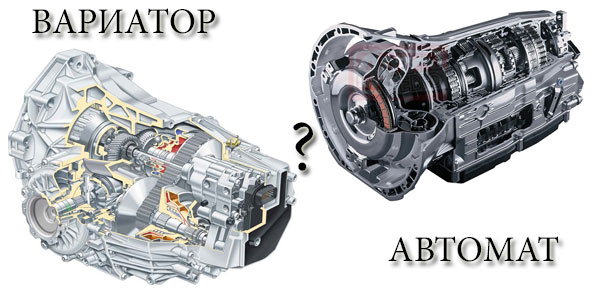
23.10.2017
Cars are equipped with a gearbox, which affects changes in speed and direction of movement.
Initially, “mechanics” became widespread; later, versions of the car with an automatic transmission began to gain popularity.
In the modern Japanese and American markets, more and more cars are being produced with a CVT transmission, for example, Toyota RAV4, Nissan Teana, Ford Mondeo.
The following question that concerns many potential car owners should be resolved:
- which is better: CVT or automatic;
- which box has a longer working life;
- what is the difference between a CVT and an automatic transmission?
- which type is more reliable?
Distinctive features of the variator and automatic
How to distinguish an automatic transmission from a CVT:
- driving feature. With a variator, there will be no jerking when changing gears;
- modern car brands behind have the name of the model itself + designation of the transmission type CVT / AT (A);
- there are fewer modes on the selector inside the car if there is a stepless mechanism;
- The documents accompanying the car include information about which box is available on the transport.
Technical components
What is the difference between a CVT and an automatic? The automatic transmission includes a gearbox and torque converter. The gearbox includes pairs of gears, and the torque converter provides clutch. Their interaction guarantees fast gear changes.
https://www.youtube.com/watch?v=vGEkhIGTPKw
The variator works without changing gears. It is a type of automatic transmission. It consists of two pulleys (driven and driven), tightened with a belt. Auto mechanics note: this device is controlled by the selector lever.
CVT transmission diagram
The difference between a CVT and an automatic is that in the first case the vehicle accelerates faster.
CVT and automatic, which is better? In terms of the quality of the oil being poured, cars with automatic transmissions are less demanding when compared. Difference between CVT and automatic:
- less fuel is wasted (when compared with automatic transmission);
- with a CVT transmission there are no jerks when changing gears (since there are no gears);
- a car with a continuously variable transmission has a high level of safety when maneuvering on icy roads. Simplified driving is noted. Automatic transmission also has this advantage.
What is more reliable: CVT or automatic transmission?
Choosing a CVT or automatic is an individual matter. The main thing in this matter is to take into account all the pros and cons of each device. When choosing a car, many are guided by the service life of these types of transmissions.
Due to the long working hours, many decide to purchase a car with an automatic transmission. Its technical part is recognized as reliable. The high pressure pump and hydraulic unit are professionally designed.
As a rule, breakdowns occur as a result of untimely maintenance of this system by the motorist, for example, the trip took a long time with a clogged filter or valve body.
This is the reason for the characteristic jerking between gears.
Both options are difficult to restore if damaged. However, in this case, the advantage remains on the side of the automatic transmission. In addition, restoration work on the machine will cost less. At 50,000 km, an excellent quality transmission oil needs to be changed.
It should be noted that not every service center undertakes repair and restoration work that is related to the CVT transmission. In some cases, auto repair shop workers may offer to replace the box itself. Restoring equipment takes a lot of time.
At 100,000 km, it may be necessary to install a new belt between the pulleys. This consumable has a considerable cost. In addition, CVTs cannot be overloaded with high power. It is because of this that this option is not found on sports cars. How to determine the visual difference is quite possible.
The design of CVTs is somewhat different than that of automatic transmissions.
Thus, the characteristics of both types of transmissions are well studied by auto experts. A variator differs from an automatic transmission in technical features and general specifics of operation. You can visually find out whether a car has a continuously variable transmission or not during a test drive. A car with such a mechanism accelerates smoothly and picks up speed.
Source: https://prokpp.ru/pro-korobku-peredach/variator-ili-avtomat.html
CVT or automatic: which is better, which is more reliable, the difference between a CVT and an automatic
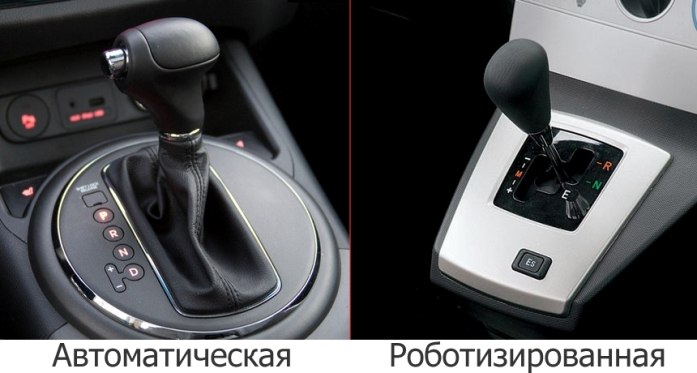
Some car enthusiasts are tormented by the question of what is better: a CVT or an automatic? Statistics show that cars with an automatic transmission are purchased twice as often as those with a CVT. But recently, the second category has become more in demand, because many new cars are equipped with CVT transmissions.
Each variety has its own characteristics and a number of differences from each other. Based on this information, a car enthusiast can make the right choice regarding whether an automatic or a CVT is better.
Features of the automatic transmission
The automatic transmission is a mature system that manufacturers have worked on for years.
If at first there were only three gears in such a box, now cars are equipped with six-speed and even seven-speed units. The following advantages of the machine can be highlighted:
- when starting to move, the most comfortable speed is immediately selected, the driver does not have to worry about this;
- high reliability, some automatic transmissions will require major repairs only after 300 thousand km;
- increased clutch service life, it is almost impossible to “burn” it, as sometimes happens with manual transmissions;
- modern craftsmen have good knowledge of the unit, which allows you to quickly and easily receive repair services;
- a small amount of electronics, it takes up approximately 30% of the entire automatic transmission device.
Of course, there are also disadvantages, these include:
- relatively low efficiency when compared with a variator (this situation arises due to the fact that all processes are carried out using a torque converter under oil pressure, and part of the useful effect is spent on this);
- there are shocks when switching, which sometimes cause inconvenience;
- using a sufficiently large amount of oil;
- increased fuel consumption compared to CVT gearboxes.
Features of CVTs
In fact, a CVT gearbox is a type of automatic transmission, but there are no speeds as such. The structure contains two pulleys, through which torque is transmitted. When the gear ratio changes, the car moves faster or slower. The variator has the following advantages:
- fast acceleration, a car with a gearbox of this type moves more dynamically than with an automatic;
- reduced fuel consumption compared to an automatic;
- no jerking when changing gears;
- increased efficiency, which exceeds the efficiency of the machine by approximately 10%.
As for the disadvantages of the variator, these include:
- very complex repairs, because not all craftsmen understand boxes of this type;
- periodic need to replace the belt between the pulleys, which is also not done in all car services;
- the presence of a large number of electronics, if they fail, you will have to pay a lot of money and go through the search for a good specialist;
- using expensive oil.
What to choose?
From all of the above, we can conclude that both the automatic and the CVT have their pros and cons. Each driver makes his own choice when answering the question of what is more reliable: a CVT or an automatic.
Both of these units are considered modern, durable and reliable, especially when compared with a manual transmission. Both types rarely require repairs and are characterized by a low degree of wear.
Of course, from the point of view of technical parameters, a CVT will be preferable. A car with such a gearbox moves smoothly and accelerates quickly. The variator has increased efficiency. It is worth noting the low fuel consumption.
But if we talk about repair problems, then in the case of an automatic transmission they do not arise as acutely as with a CVT. This difference between a CVT and an automatic is especially important for those motorists who live in not too large populated areas.
Usually it is extremely difficult to find a technician there who could repair the variator.
CVT transmissions should be chosen by those drivers who choose small cars and strive to save fuel. A traditional automatic is perfect for those who love more powerful cars and also drive not only in the city, but also off-road.
How to distinguish a CVT from an automatic? If the driver does not understand this issue, then you just need to look at the documentation. The variator is designated by the letters CVT.
It is also worth saying that if we are talking about buying a car second-hand, it is better if it is equipped with an automatic transmission.
Serious problems can arise with the variator after a certain mileage, and high-quality repairs, as mentioned above, are not easy to obtain.
If the material was interesting or useful for you, publish it on your social network page:
Source: http://jrepair.ru/interesnoe-na-jrepair-ru/agregats/variator-ili-avtomat


